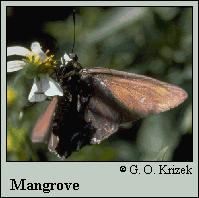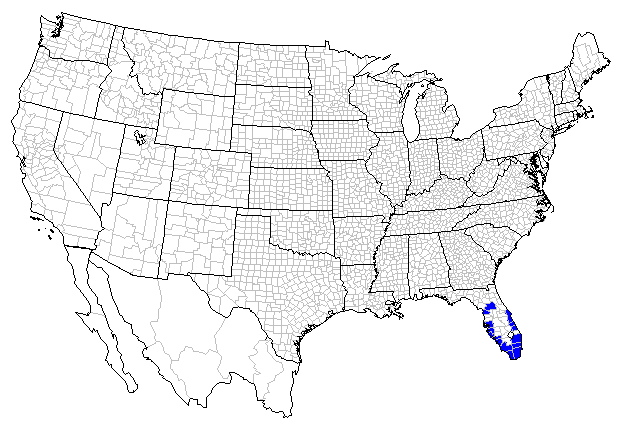 |
 

 |



Mangrove (Phocides pigmalion [Cramer])
Wing span: 1 7/8 - 2 3/4 inches (4.8 - 7 cm).
Identification: Wings are brown-black; hindwing has iridescent blue streaks both above and below.
Life history: Flight is fast and powerful. Males perch to seek females, who deposit eggs singly on the host plant. Caterpillars eat leaves and live in shelters of silked-together leaves.
Flight: November-August in southern Florida.
Caterpillar hosts: American mangrove (Rhizophora mangle).
Adult food: Nectar including that of mangrove, shepherd's needle, citrus, and bougainvillaea flowers.
Habitat: Coastal mangrove thickets and openings.
Range: Both coasts of peninsular Florida and the Keys south through the West Indies and Mexico to Argentina. Strayed to coastal South Carolina.
Conservation: Not usually required.
The Nature Conservancy Global Rank: G5 - Demonstrably secure globally, though it may be quite rare in parts of its range, especially at the periphery.
Management needs: None reported.
References:
Opler, P. A. and G. O. Krizek. 1984. Butterflies east of the Great Plains. Johns
Hopkins University Press, Baltimore. 294 pages, 54 color plates.
Opler, P. A. and V. Malikul. 1992. A field guide to eastern butterflies. Peterson
field guide #4. Houghton-Mifflin Co., Boston. 396 pages, 48 color plates.
Scott, J. A. 1986. The butterflies of North America. Stanford University Press,
Stanford, Calif. 583 pages, 64 color plates.
Author: Jane M. Struttmann

